When you think of membership level names, chances are Basic, Standard, or Premium come to mind. They’re common for a reason – they’re clear and easy. But they also sound just like everyone else.
But if you want your membership to stand out and keep members engaged, a little creativity can go a long way. A well-named level helps members feel more connected, valued, and proud to be part of your community.
When people feel like they belong, they stick around longer. And in the membership world, retention is everything.
In this post, we’ll explore how creative names can boost retention, share real examples you can borrow, and give you tips for naming your levels. But first, let's learn more about the importance of creative membership level names.
Contents
The Importance of Creative Membership Level Names
Creative membership level names help shape how people see and experience your brand. Here’s why they matter:
- Unique names can showcase your mission, tone, and values in a way that feels more personal and aligned.
- A creative name sticks in someone’s mind and sets you apart from competitors using generic labels.
- Engaging names speak directly to your ideal audience and give a taste of what your community is all about.
- When a level name feels meaningful, members are more likely to identify with it and stay committed.
- Thoughtfully named tiers can make upgrades feel like a natural, exciting next step.
Examples of Successful Membership Level Names
The best brands understand that naming their membership levels is more than a technical decision. They invest in names that make members feel inclusive and make them eager to upgrade to the next tier. Let’s take a look at some real-world examples of companies that got their membership names right, and what we can learn from them.
Spotify
Spotify, one of the world’s most popular music streaming services, has got this membership level names on lock with tiers that cater to a lifestyle. At first glance, these names seem simple. But that’s the point. They speak directly to who the user is, without fluff, without guesswork. And that clarity builds trust.
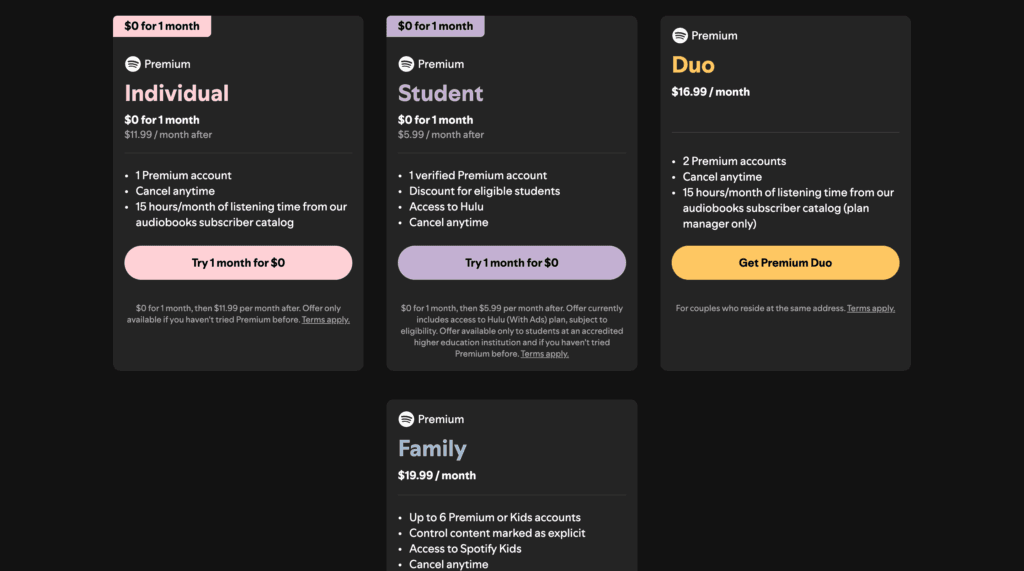
Let’s break it down:
- Premium Individual tells you this plan is made for you. Just one person. No complications. If you’re someone who values your own space – your own vibe – this name reinforces that independence
- Premium Student speaks directly to a life stage. It’s financially thoughtful, but also identity-aware. Students don’t just want discounts, they want to feel understood. Spotify gives them both.
- Premium Duo instantly feels cozy. It speaks to couples, best friends, roommates – anyone who shares but still wants personal playlists. It’s efficient and financially smart.
- Premium Family evokes belonging. It’s inclusive, warm, and structured, offering benefits with boundaries. It’s not just a plan; it’s a mini-community.
Each name does something essential: it mirrors the user’s life. When people feel seen, they feel connected. That emotional alignment is powerful, it’s what makes a member stay.
Netflix
Let’s take a look at Netflix membership level names. These names don’t try to be clever. They try to be clear. And in a world overflowing with choices and fine print, clarity is comforting. That comfort builds trust, and this keeps members subscribed month after month.
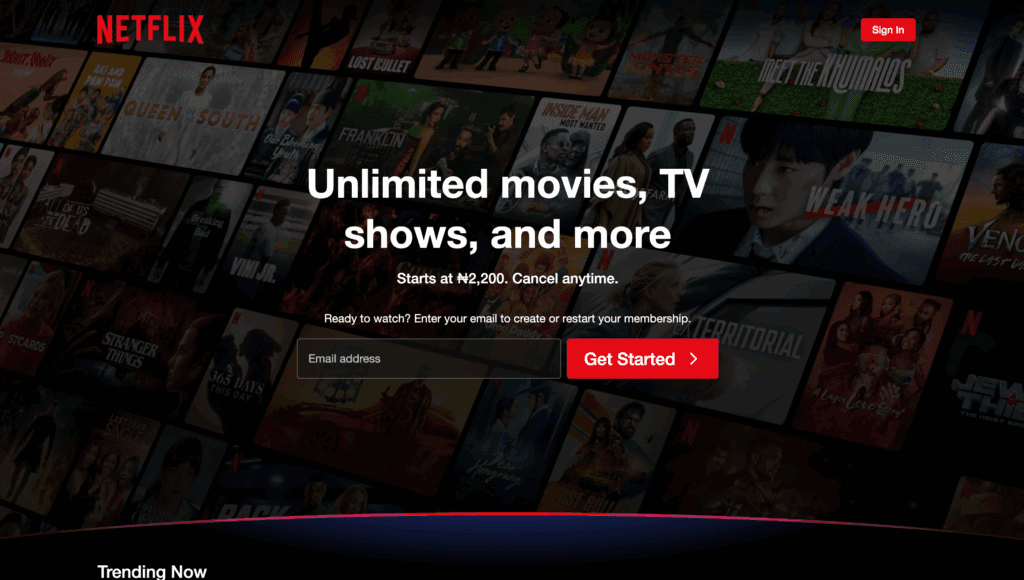
Here is what you can learn from Netflix:
- Standard with Ads tells the truth upfront. No sugar-coating. Members know exactly what they’re getting: a lower price with a tradeoff. That kind of honesty attracts budget-conscious viewers and makes them feel respected. And people stick with brands that treat them like adults.
- Standard feels safe. It’s the default – the no-risk, no-fuss option. For many users, it feels “just right.” Not too basic. Not too fancy. That psychological middle ground is key for users who don’t want to overthink their choices.
- Premium promises more. More quality. More screens. More status. But here’s the subtle genius: Netflix doesn’t call it “Ultimate” or “Elite.” “Premium” is aspirational without being intimidating. It feels like a treat, not a stretch.
Netflix proves that you don’t need flashy names – you just need names that set clear expectations and feel aligned with the member’s priorities. Whether it’s transparency, convenience, or access to more, each tier name reinforces that the user made the right choice.
So, before naming your levels “Gold,” “Silver,” and “Bronze,” ask yourself: Do these names help your members feel understood, empowered, or excited to stay?
Because the right name doesn’t just describe a level – it supports a relationship. And relationships are what retention is built on.
Amazon Prime
Unlike Spotify and Netflix, Amazon doesn’t break its membership into standard-sounding tiers like Basic or Premium. Instead, it builds variations of “Prime” that reflect who the member is and why they’re joining.
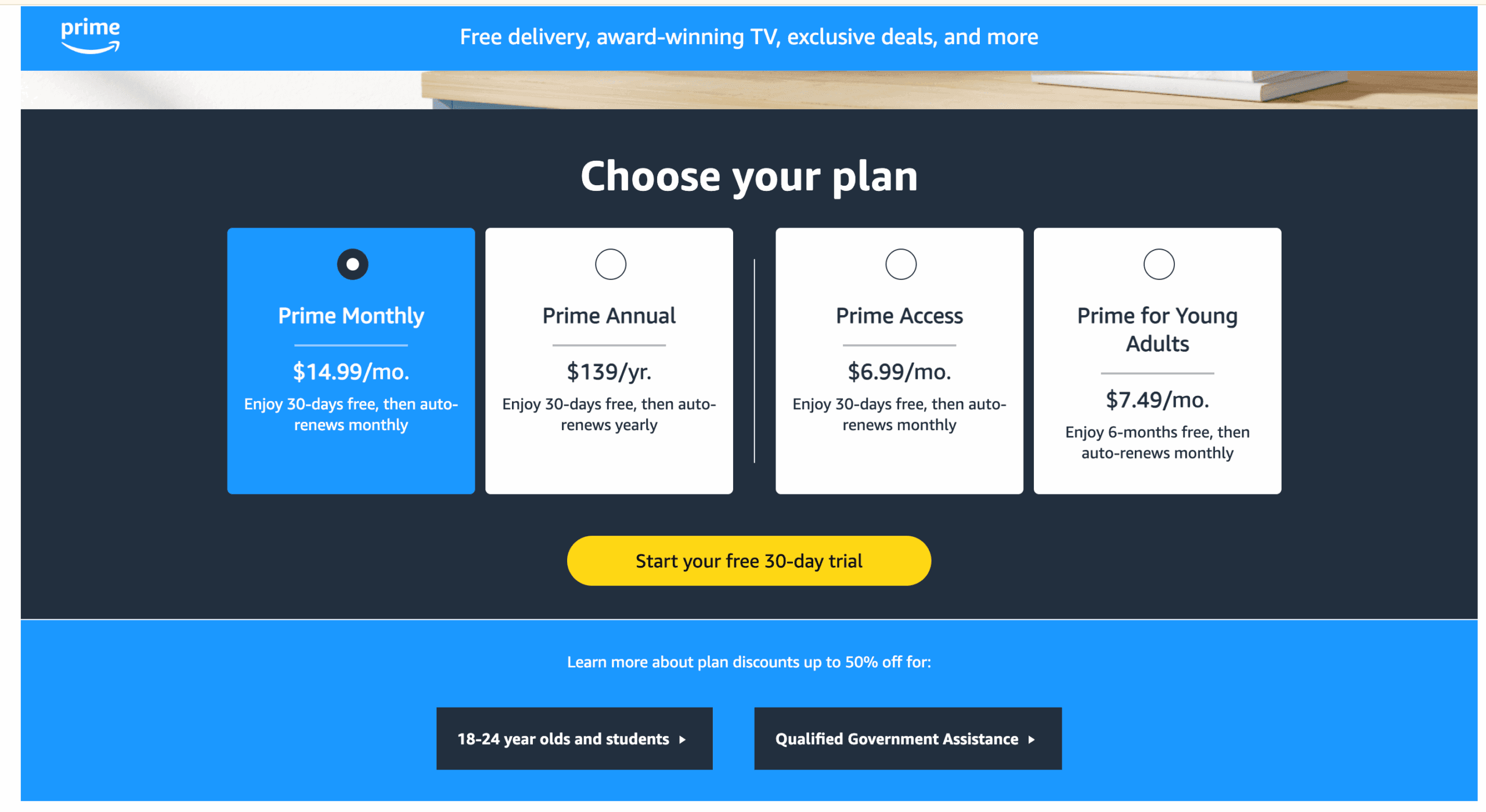
Let’s explore what makes this structure so powerful:
- Prime is the core. No modifiers, no fluff. It feels bold, complete, and definitive. When someone says they have “Prime,” they’re signaling membership in something elite, but accessible. It’s become a status symbol for convenience and value.
- Prime Student/Young Adult is clever branding. It’s not “Student Discount Prime.” It’s Prime Student – putting the student identity first. That little shift speaks volumes. It says: “This version of Prime is made for you.” It appeals to both affordability.
- Prime Access caters to customers on government assistance. And the name strikes the perfect tone – it’s dignified and inclusive. It says, “You still get full value.” It avoids sounding like a budget plan and instead emphasizes accessibility, which is powerful for retention and brand loyalty.
- Prime Video is for people who just want to stream shows and movies without paying for all of Amazon Prime. The name is clear and helps keep users connected to Amazon, even if they don’t need the other benefits.
How to Create Membership Level Names That Increase Retention
Now that we’ve looked at how top brands like Spotify, Netflix, and Amazon name their membership tiers, it’s time to create your own.
Whether you're running an online course, a coaching program, or a product-based membership, your level names should do more than organize plans – they should build connection, identity, and loyalty.
Here’s how to do it:
1. Start With What Matters: Principles That Work
Before you start brainstorming names, it’s important to get the basics right. A good membership level name needs to make your members feel something and reflect what your brand is all about.Here are three key principles you need to follow:
Be Inclusive
Make sure your names are welcoming to everyone. Avoid terms that might feel too niche, technical, or exclusive unless your brand intentionally serves a very specific audience. A name should invite people in, not make them second-guess if they belong.
Think about it this way: would someone new to your community feel seen and valued just by reading your membership names? If yes, you’re on the right track.
Make it Memorable
The best names are the ones people remember. If a member has to reread it twice to get it, it’s probably too complicated. Stick to short, simple, and creative names that leave an impression. This doesn’t mean boring – it means clear and catchy. A name like Momentum Builder may stick better than something like Tier 2 Access Pass.
Keep it Relevant
Your level names should reflect the tone, personality, and promise of your brand. If your business is playful and creative, your names can reflect that. If you offer serious professional services, lean into names that sound trustworthy and polished. The key is alignment. Don’t use trendy names just to be clever – choose names that feel right for your audience and what you offer.
2. Brainstorm Like a Pro
Staring at a blank screen, trying to name your membership levels? Don’t worry – coming up with great names is easier when you use the right strategies. Here are some creative ways to get your ideas flowing, plus examples you can adapt to fit your business.
Think in Themes
Start with a theme that fits your brand or what you’re offering. This makes your naming feel cohesive and intentional, and it helps members understand the value of each level right away.
- Education/Learning: Explorer → Pathfinder → Master
- Fitness & Wellness: Kickstart → Power Up → Athlete Mode
- Community or Lifestyle: Seedling → Growing Strong → Full Bloom
- Coaching & Business: Starter Circle → Growth Track → Legacy Leader
- Creative Writing or Books: Short Story → Novel → Epic
Use Pop Culture or Industry References
A well-placed reference can instantly connect with your audience, just make sure it feels relevant and doesn’t overcomplicate things.
- A fandom site might use Sidekick → Hero → Legend
- A startup community could use Garage → Launchpad → Unicorn
- A productivity course could go with To-Do → In Progress → Done & Dusted
The goal is to make your members smile and feel like they're “in” on something.
Highlight Progression
People love to “level up.” Use names that clearly show growth, advancement, or increased access.
- Beginner → Pro → Elite
- First Steps → Momentum → Breakthrough
Avoid names that sound like people are starting at the “bottom.” Use language that encourages growth, not comparison.
For example: Instead of Bronze → Silver → Gold, which can make the first tier feel like it belongs to those beneath, which may discourage new members or make members feel like they are not valuable unless at the top, instead, try something like: (Seed → Sprout → Bloom ) OR (Explorer → Trailblazer → Visionary).
These still show progression, but in a way that feels empowering and supportive, not hierarchical. Members should feel proud of where they are, not pressured to “escape” the lowest tier.
Get Input from Your Members
Your members can be your best inspiration. They know what they want and how they talk about your brand.
- Run a poll or quiz in your email or community.
- Offer two or three naming options and ask for feedback.
- Look at the words your audience already uses – in testimonials, comments, or reviews.
Your names don’t have to be flashy, just thoughtful. When they reflect your brand and speak to your members' journey, they become milestones.
3. Tell a Story Instead of Just Naming Levels
Great membership level names don’t just label – they evoke. Your tier names should reflect a journey your members are on. When someone joins your community, they’re not just paying for content or perks – they’re stepping into a transformation. Your level names can mirror that story arc.
For example:
- A writing membership might go from Drafting Desk → Storyteller's Studio → Author’s Circle
- A fitness site could use First Rep → Sweat Mode → Peak Performance
When the names align with the why behind your program, people feel like they’re part of something bigger. They’ll be more motivated to stay, grow, and even level up.
4. Use Naming to Encourage Upgrades
Well-crafted level names can spark curiosity and create natural momentum between tiers. Your entry-level name should make people feel good about joining, while your higher tiers should feel like aspirational (but attainable) next steps.
For example:
- A course site could go from Getting Started → Making Moves → Mastering the Game
- A productivity community might progress through Focus Club → Efficiency Crew → Momentum Masters
Each name hints at what the member will gain, and what kind of person they become by stepping up..
5. Bring It to Life with WishList Member
So you’ve got the perfect names. Now what? Coming up with great membership level names is only half the job — you also need a powerful tool to make them work seamlessly on your site. That’s where WishList Member comes in.
WishList Member is a flexible, WordPress-native membership plugin that lets you create unlimited membership levels — and fully customize what each level can access, see, and experience. Whether you're building a coaching hub, an online course site, or a content subscription, WishList Member helps you deliver on the promise each level name makes.
Here's how easy it is to create custom membership level names:
- Choose the right WishList Member plan
- Install and activate the plugin in your WordPress dashboard
- Go to the WishList Member settings
- Click “Add New Level”
- Enter your custom level name (e.g., Trailblazer, Inner Circle)
- Set access rules and assign protected content
- Save your changes — your custom level is now live!
Wrapping Up
We hope this blog has helped you understand that your membership level names are more than just labels. They’re invitations, milestones, and connection points. They tell your members who they are, what they’re part of, and what’s possible if they stick around.
When done right, a great name boosts confidence, builds community, and sparks loyalty. It becomes a badge of identity your members are proud to wear. So take the time to craft names that mean something. Reflect your brand’s voice. Highlight your members’ journey. And most importantly, make them feel like they belong.
And when you’re ready to bring those names to life on your website? WishList Member gives you the tools to do it with ease, control, and confidence.
In just six years, Spotify has amassed over 50 million users, and Netflix made $39 billion in 2024. These are just one of the many success stories these brands have. And naming your membership levels right might just be the turning factor for your membership business.
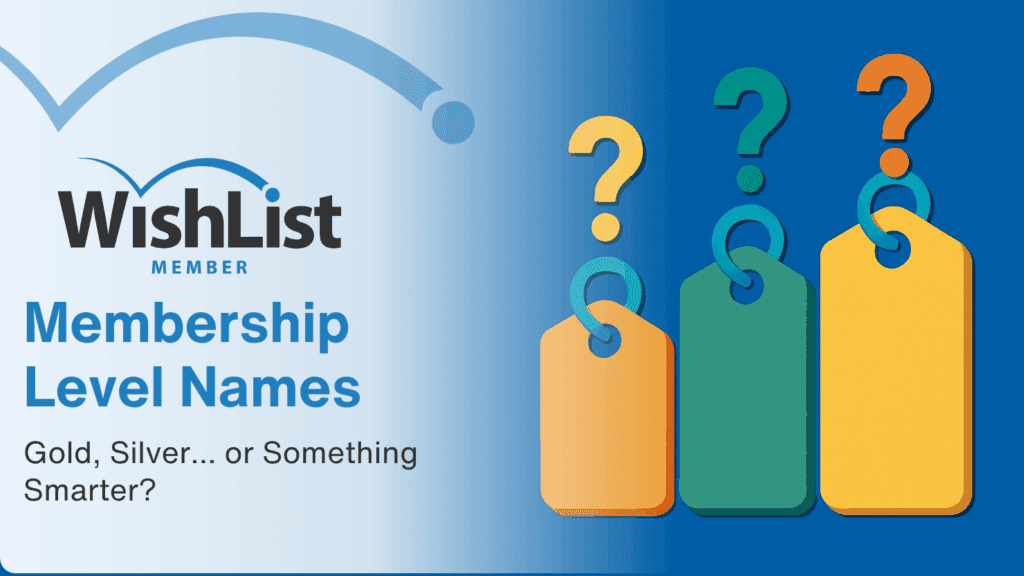





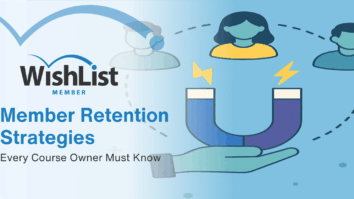
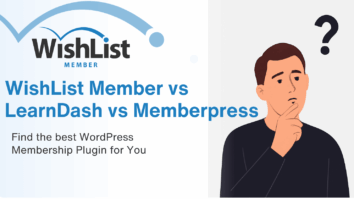

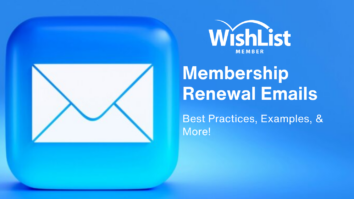


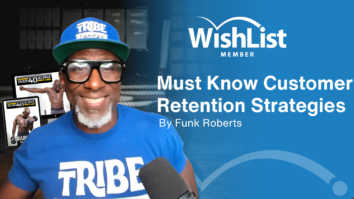














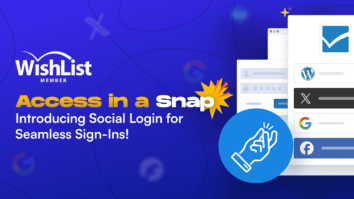












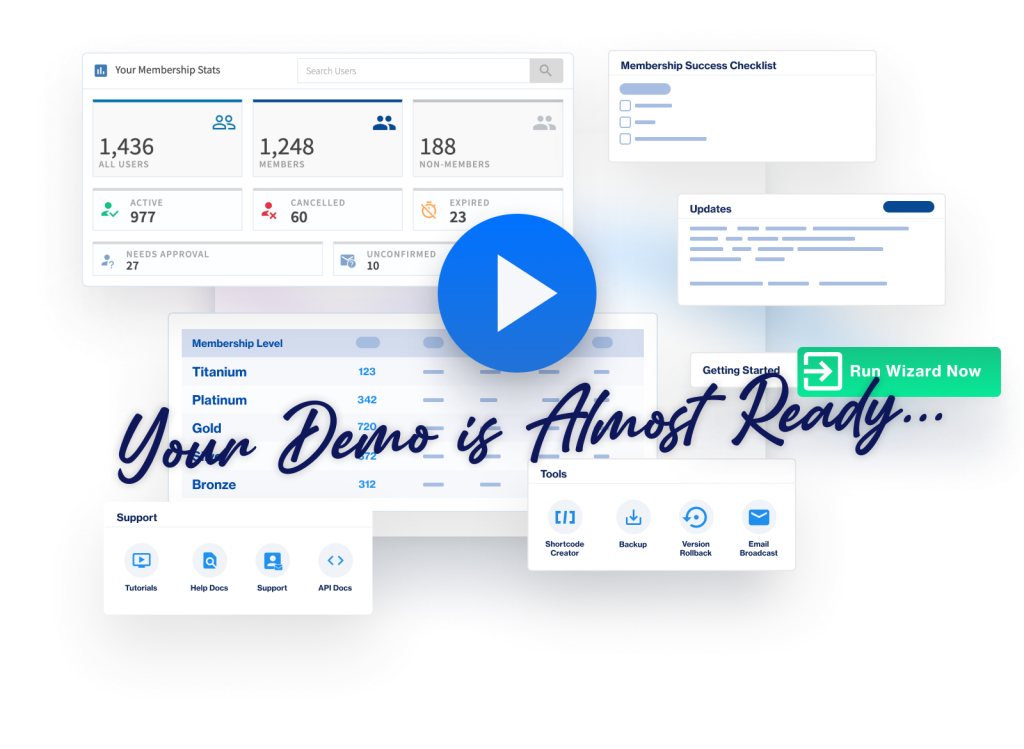
This Post Has 7 Comments
You’ve really given me something to think about.
Fin artikkel! Greit å vite at kreative navn kan hjelpe folk å føle seg mer knyttet til medlemskapet. Men hvordan kan man finne de riktige navnene som passer for alle typer medlemskap?
Thanks so much! 😊 Totally agree — a creative name really can make members feel more connected. As for finding names that work across different types of memberships, it all comes down to knowing your audience and the vibe you want your brand to give off.
Every time I visit your website, I’m greeted with thought-provoking content and impeccable writing. You truly have a gift for articulating complex ideas in a clear and engaging manner.
Thank you so much, Florian! 😊 Your kind words truly mean a lot. We’re so glad you’re enjoying the content and finding value in the way we present things — it’s exactly what we aim for. Appreciate you being part of our community!
Your writing is like a breath of fresh air in the often stale world of online content. Your unique perspective and engaging style set you apart from the crowd. Thank you for sharing your talents with us.
We appreciate the feedback, Chaya!